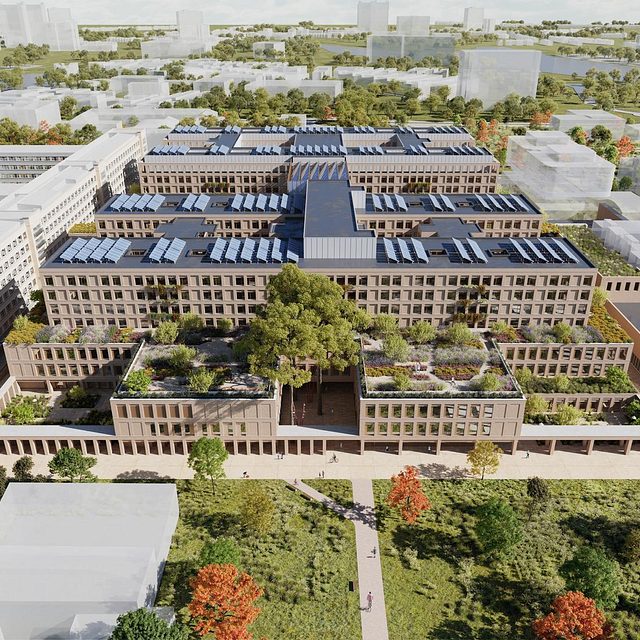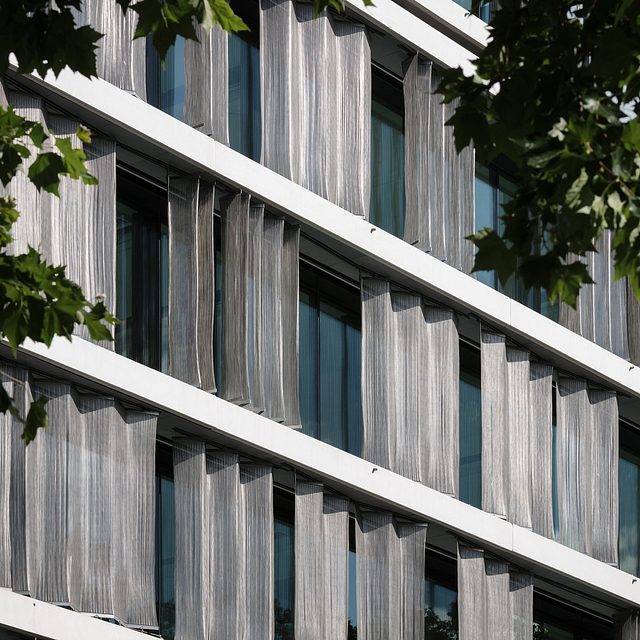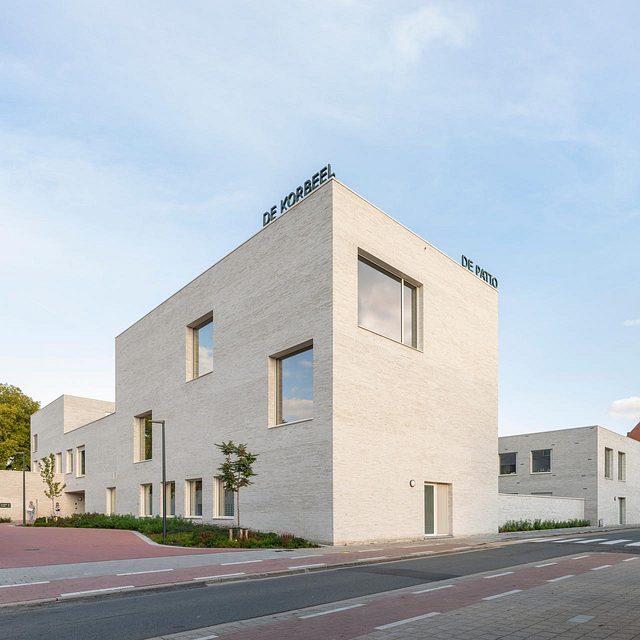
VK architects+engineers screens buildings with own VKaLCA-tool
About
With the VKaLCA tool, VK architects+engineers has developed its own instrument to screen design choices in order to optimise the environmental performance of a project at each stage of its life cycle.
We are committed to facilitating the transition to a more sustainable design and construction practice by supporting our clients throughout the entire construction process.
The precise mechanism is a trade secret, but Giovanni Litti, Project Engineer Sustainable Building Design at VK architects+engineers, is happy to explain why the tool has been developed and its added value. "Engineering firms have a responsibility to facilitate the transition to a more sustainable building practice," he says.
"The European Union aims to be climate-neutral by 2050, which translates into 'net zero' emissions of greenhouse gases. This ambitious target is at the heart of the European Green Deal and is in line with the Paris Climate Agreement, which aims to limit global warming to no more than 2°C and ideally to 1.5°C by 2050. After all, this will require an 80% reduction in greenhouse gases. The construction sector - forgive the pun - has to leave no stone unturned, since buildings in Europe are currently responsible, through their construction and/or use, for 42% of total European energy consumption, 35% of total greenhouse gas emissions, 50% of raw materials extraction and 30% of European water consumption. As such, the construction industry really only offers opportunities in the environmental and climate story".
"The EU is well aware of this and has therefore set progressive targets, both in terms of energy efficiency of buildings and in terms of more efficient use of raw materials and reduction of construction waste, in order to reduce the environmental burden of the construction sector. According to the 2018 European Energy Directives, the aim is, on the one hand, to improve the energy efficiency of the 210 million existing buildings in Europe and, on the other hand, to build energy-neutral buildings. In addition, the EU's Resource Efficiency Roadmap (RERM) states that, from 2020 onwards, the design and construction of new buildings must focus on the energy efficiency of the materials used and that 70% of non-hazardous construction and demolition waste must be recycled".
Engineering and construction companies therefore have a valuable role to play, according to Litti. "They have a responsibility to facilitate the transition to a more sustainable construction practice and must take it," he says. "They must help builders, developers, private individuals and architects to identify the environmental implications - throughout the life cycle - of certain design choices.
Quantify
According to the engineer, this must be done in a quantifiable manner. "If the environmental implications of design choices are not evaluated through a life cycle analysis or LCA, there is a risk of greenwashing. A particular design or construction practice is then described as environmentally friendly, even though this is completely impossible to substantiate. Let me give you an example: locally produced building materials are almost always labelled more environmentally friendly than imported materials. Yet that is not always true. A locally produced product from an inefficient and polluting factory can have a larger ecological footprint than a product manufactured much further away but in an (energy) efficient factory and transported to the construction site through an optimised logistics process".
Pre-demolition audits
To provide clients with a better understanding of the environmental impact of their project or the materials used throughout its lifecycle, VK architects+engineers has therefore developed its own assessment methodologies and calculation tools that can be used in both new-build and renovation projects, as well as for infrastructure works. "For example, we use the in-house developed VKaLCA tool to screen design choices in order to improve their environmental performance. Or we deliver studies that help customers make a sustainable choice of building materials, taking into account both ecological and economic costs. We are seeing a real increase in demand for sustainable sourcing and efficient use of materials. Our engineers also carry out so-called pre-demolition audits - especially in the context of renovation projects - to contribute to the containment of construction and demolition waste as defined in the REMR, as well as research into the re-use potential of materials and the development of environmentally friendly building maintenance programmes".
"In short," concludes Litti, "we are committed to facilitating the transition to a more sustainable design and construction practice by supporting our clients throughout the entire construction process".
Source: Circubuild.be
Other interesting articles

Master plan UZ Gent campus, new standards in care and sustainability

Quartz, a full lifecycle project
